

PRODUCTS & SERVICES CAPABILITIES
At COLAS Australia Group we are a fully integrated bituminous materials supplier and applicator with our own bitumen and quarry resources. Over and above our global capability, we are well positioned through our local subsidiaries to construct and maintain your flexible pavements through our extensive product range and local contracting services.
We are COLaS.
Pavement solutions delivered in the safest manner with the support of a knowledgeable technical team with the latest equipment.
Bituminous product range tailored to provide the road asset owner with the appropriate treatment type to maintain pavements in the most sustainable way during its life cycle.
Our products and services range from providing preservation, routine and periodic maintenance treatments, rehabilitation of existing pavements to construction of new pavements.

Products
Services
Safer Sustainable Solutions - Asphalt
Page 4-5
Page 6-7
Page 8-18
Reclaimed Asphalt Pavement (RAP) Page 10
Warm Mix Asphalt (WMA) Page 12
Crumb Rubber Modified Asphalt Page 14
ECO Asphalt Page 16
EME2 Asphalt Page 18
Safer Sustainable Solutions - Spray Seals
Page 20-24
COLAS Graded Seal Page 20
Emulsion Spray Seals Page 22
Crumb Rubber Modified Binders (CRMB) Page 24
Safer Sustainable Solutions - Preservation treatments Page 26-32
SAMIfilla HM Page 26
CrackStix Page 28
SRS SealCoat Page 30
FRM SealCoat Page 32
Safer Sustainable Solutions - Innovation Page 34-35
Flowell Page 34

products.
Our products have been developed and manufactured to provide the highest quality and best performance outcomes for your traffic and climatic environment. COLAS can supply and pave asphalt mixes which comply with Council and State Road Authority specifications as well as spray all binder types.
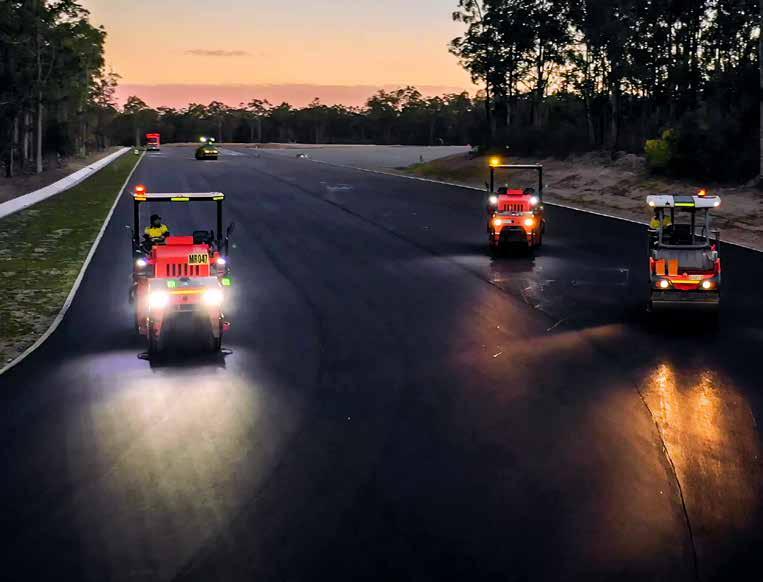
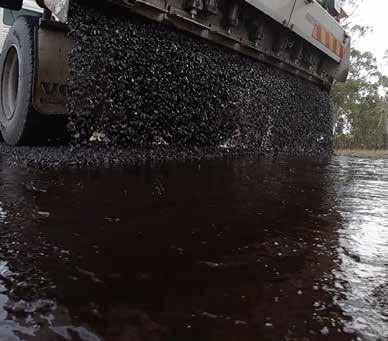
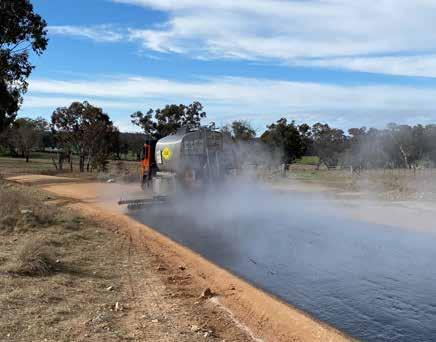
1. Compacting AC10 Asphalt on a racetrack
2. Spraying High-Float Emulsion on rural roads
3. Laying aggregate for a Graded Seal
Services.
To deliver these products COLAS have state-based manufacturing and contracting resources located across Australia.
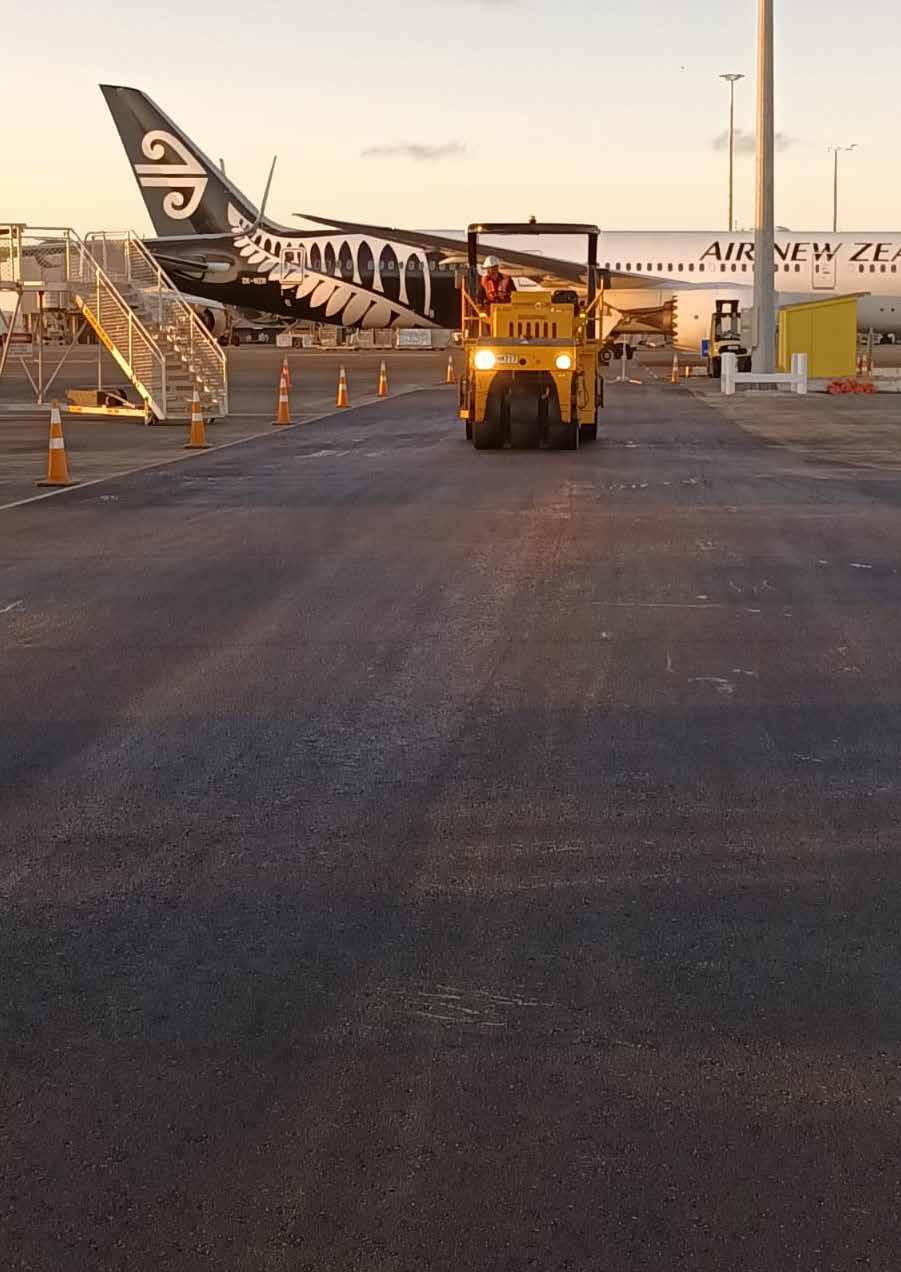
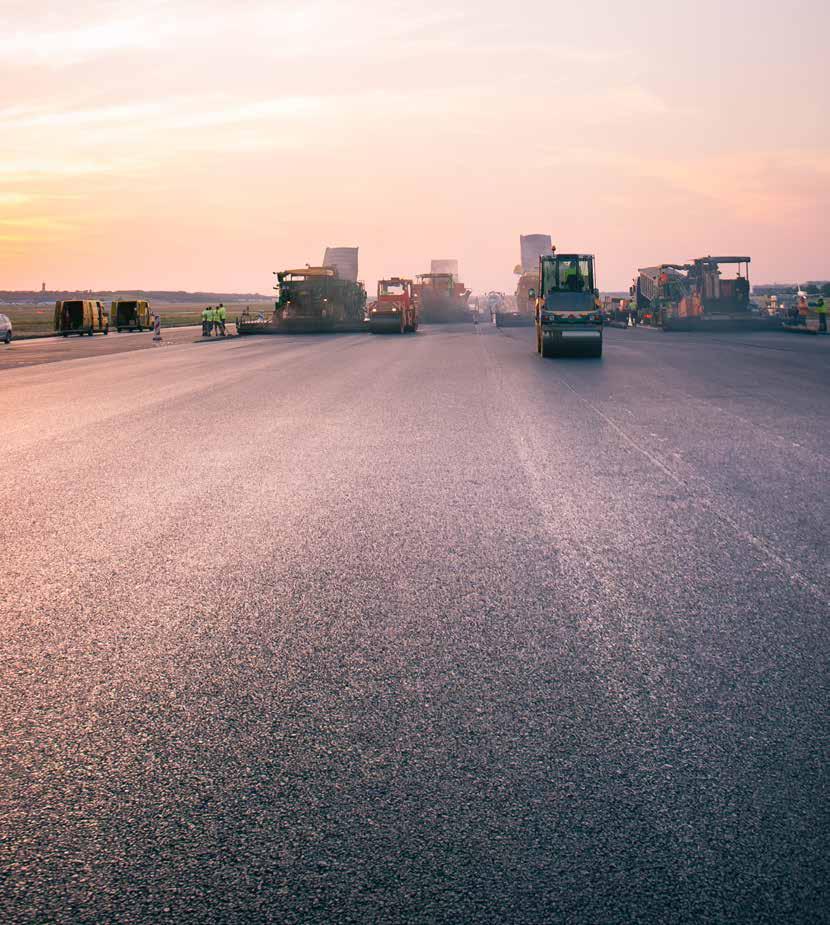
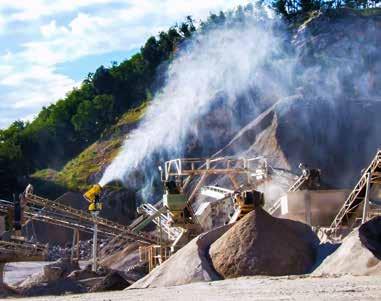
At COLAS, our focus is to provide our clients with innovative and sustainable products and services to help you deliver your projects on budget and on time. No job is too big or too small–from delivering large infrastructure projects to performing maintenance activities. We can provide these products and services individually or package them to suit your requirements.
Our construction teams have the experience and capability to undertake multidisplinary projects, from paving race tracks to resealing and paving airport pavements, construction and application of heavy duty asphalt pavements for highways, and industrial hard standing areas just to mention a few examples.
Through our global COLAS network, we have direct access to the latest technology in the manufacturing and application of binders and asphalt products. This is under pinned by our close linkages with SAMI Bitumen Technologies for sourcing our binders and association with other COLAS companies in Australia like VSA Group and Dust-A-Side Australia.
Some of our key service offerings include:
• transport and on-site storage of binders
• mobile asphalt and crumb rubber blending plants
• on-site quality control testing laboratories and services
• spray seal and asphalt mix designs
• asset condition assessments and advice on best value asset maintenance expenditure
• research and development at our Central laboratory in Paris

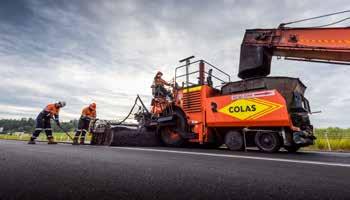

Echelon paving of race track
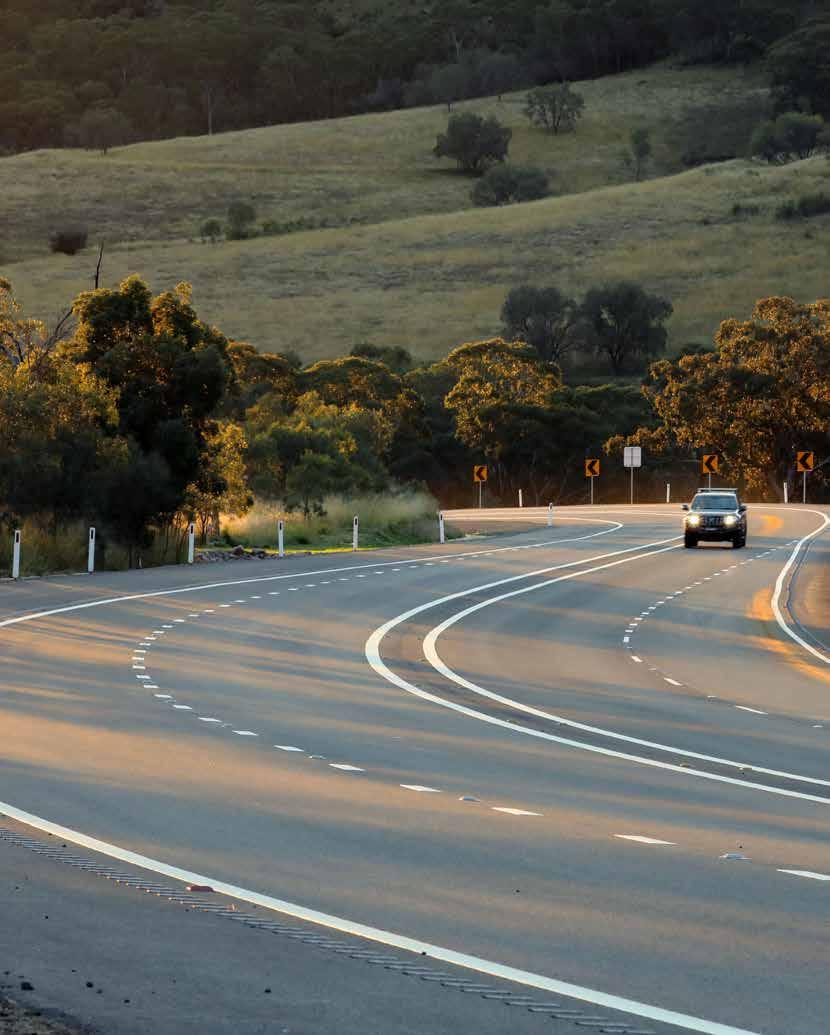
We’re opening the way to safer sustainable solutions.
The Golden Highway which was rehabilitated using asphalt with 25% RAP

At COLAS Australia, we’ve been thinking ahead. Our roads connect more than people and place, they connect our futures. They take our young ones to school and old friends on new adventures. They help our businesses reach new customers and our customers get to work. From work to play, they keep us connected to things that matter most to our lives. Our country has over 350,000 kilometers of paved roads and more than half a million kilometers of unpaved roads — that’s why we’re helping Australia go from A to Better with safer, more sustainable pavement solutions.
OUR PLEDGE TO SUSTAINABILITY
The Colas Group is committed to reducing the carbon footprint of our activities by 30% by 2030, based on our 2019 figures. We plan to achieve this through the design, manufacture, and application of our products by replacing non-renewable materials with repurposed waste materials, reducing our energy consumption, and improving their performance to ensure that they provide a longer lasting maintenance free life.
Our ECO Asphalt range of dense graded asphalt optimises the reuse of RAP, recycled crushed glass, crumb rubber from old tyres, steel slag, repurposed plastic, biogenetic binders and warm mix technology to produce a low carbon mix with superior performance properties to standard dense graded asphalt. The crumb rubber from old tyres that we use to modify our binders can be sprayed without cutters to provide more durable and longer lasting seals. The emulsions that we use in our sprayed seals and Sealcoat treatments eliminate the need to use volatile cutters and reduce the amount of energy required to perform these applications. Our Ecomac, Bioprime and Biorestor are produced from non-petroleum based cutters and fluxes.
reusing one of our most valuable assets with rap.
RAP is recovered from milling old asphalt pavements and reprocessed so that it can be reused to produce new asphalt.
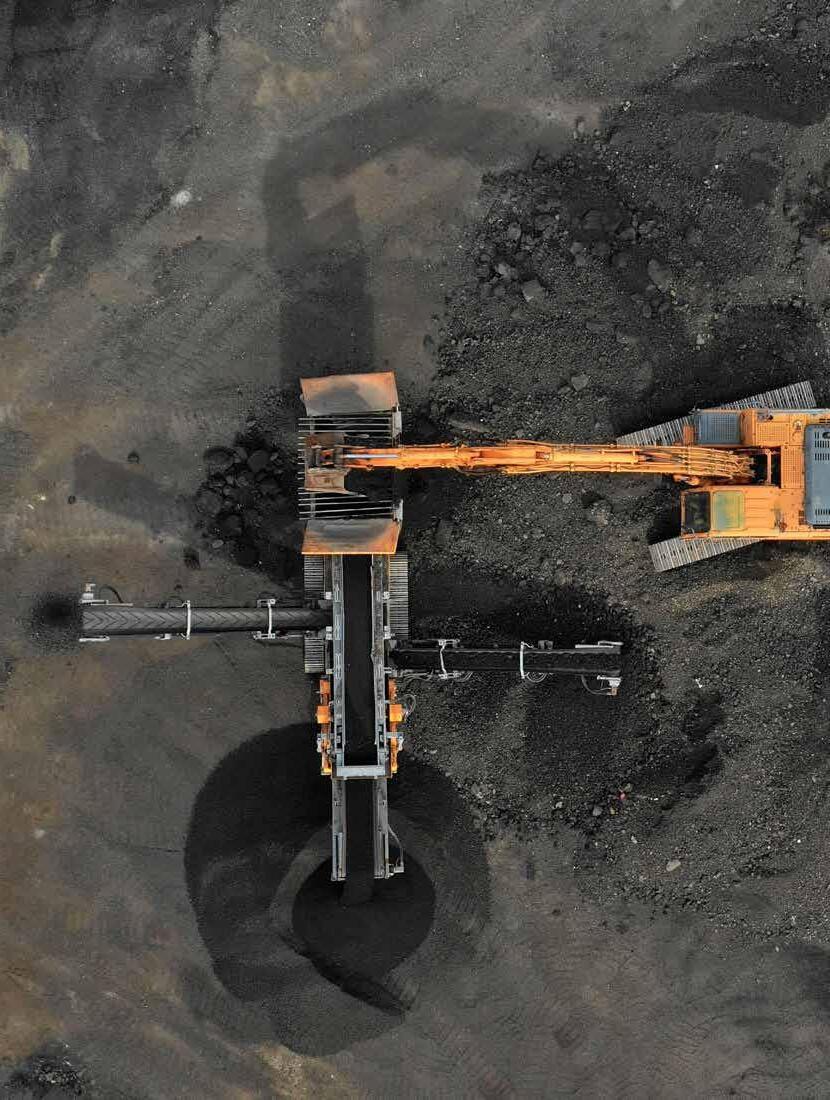
By using RAP we will reduce the demand for non-renewable raw materials like bitumen and aggregates.
Screening RAP into different fractions
Image:
Asphalt is 100% recycleable, which means that at the end of its service life, it can be reused to produce new asphalt. Reclaimed Asphalt Pavement (RAP) should not be considered as a waste but an engineered product. Therefore, RAP should not be disposed of but reused in the production of new asphalt.
“Trade in your old asphalt pavement for a new one.”
The aggregate in the RAP was produced to a specification. Through milling and reprocessing it can be reused to produce new asphalt.
The bitumen in the RAP will have undergone hardening, mainly through oxidation during its service life. By reheating the RAP it will comingle with virgin bitumen making it suitable for reuse.
The practice of reusing RAP is a well proven technology, incorporated in specifications across the world and offers the following benefits to road asset owners and society:
• By reusing RAP we will help preserve our scarce non-renewable raw materials like bitumen and high-quality aggregates for future generations and keep RAP out of landfills.
• By reusing RAP we reduce the energy and green house gas emissions generated during the extraction and processing required in the production of virgin materials.
• The value of RAP is in the new materials it replaces – bitumen and aggregates. This does not only include the cost of producing these materials but also the transport and heating less the cost of processing the RAP. The best economical return on RAP is to reuse it in asphalt and not use it for a low value material in other applications.
• Reclaimed asphalt can improve the performance of the pavement because:
a. The aged binder in the RAP helps stiffen the asphalt so it can withstand rutting under heavy traffic at high road surface temperatures.
b. The RAP aggregate is precoated with the aged binder so it makes the asphalt less sensitive to the binder stripping from the aggregate due to moisture.
MAKING ASPHALT MORE SUSTAINABLE
During the manufacture of the new asphalt, heat from the virgin aggregates transfers to the RAP, reactivating the aged binder. Most of our COLAS plants use bitumen foaming systems to improve the coating of RAP and the virgin aggregates during plant mixing. This helps improve the workability of the asphalt during placement. The use of the foam bitumen systems also helps reduce the mixing temperature of our asphalt which is a win-win for the environment.
RAP can be used in conjunction with other secondary waste materials like recycled crushed glass, steel slag, fly ash, and crumb rubber from old tyres to reduce the demand for virgin materials and produce new asphalt, without compromising the overall performance of the asphalt.
HOW MUCH RAP CAN BE REUSED?
The use of RAP must not compromise the quality or performance of the new asphalt that is produced. The amount of RAP that can be reused will depend mainly on the following factors:
• The availability of suitable asphalt for reuse;
• The capability of the asphalt plant to rejuvinate asphalt;
• The type of mix and/or binder type used in the new asphalt.
The incorporation of up to 15% RAP in dense graded asphalt will have little or no influence on the performance properties of the mixes.
At COLAS we strive to optimise the amount the RAP we use in our mixes so that we achieve the same, if not better, performance of our mixes. To do this we:
• Monitor the quality of our processed RAP on an ongoing basis by measuring binder and moisture contents, gradings, and recovered properties of the aged binder;
• Conduct laboratory-based performance tests on our mixes like tensile stress ratios, wheel tracking, fatigue and modulus

Schematic showing the heat transfer between the virgin aggregate and RAP
the future is warm.
The use of WMA is becoming increasingly popular worldwide. Warm mixes are produced at lower temperatures than conventional hot mixes using a range of special technologies, while maintaining the same asphalt performance properties in service.

Warm Mix Asphalt (WMA) is essentially the same as Hot Mixed Asphalt (HMA), except that it has been produced at a lower temperature without compromising its ability to be paved and compacted.
WMA helps satisfy the community’s need to reduce environmental impact and energy consumption during the manufacture and paving of asphalt.
Some of the key benefits of reducing HMA mixing temperatures are:
• Reduction of greenhouse gas emissions, which is good for the environment
• Reduction of fumes and odours, which is safer for everyone in close proximity during paving operations
• Easier for construction of multilayers of asphalt in the same shift
• Increase the durability of asphalt wearing courses in low trafficked environments due to less ageing of the binder

WMA paved on suburban roads
PRODUCTION & CONSTRUCTION
WMA technologies like foaming, synthetic wax, or surfactants are used to reduce the binder’s viscosity, making it easier to compact asphalt at lower paving temperatures. This innovation is also aided by the fact that WMA has a more uniform temperature across the surface of the mat than HMA, and at a lower temperature, the rate of cooling is slower. This leads to WMA having:
1. More uniform compaction of construction joints.
2. Improved productivity as we can:
• begin paving the next layer sooner due to shorter cool-down times between layers
• quicker return to traffic with shorter cool-down times between layers.
A further reduction in the mixing temperature can be achieved depending on the layer thickness, distance between the job site and the asphalt plant, and the ambient paving temperature. Refer to Table 1 for guidelines to lowering asphalt mixing temperatures.
COMPACTION
The same compaction can be achieved when using WMA technology at lower temperatures.
MAKING ASPHALT MORE SUSTAINABLE
The use of WMA allows us to reduce our carbon footprint and improve the health of our workers by reducing asphalt manufacturing temperatures. This can further be enhanced by using RAP, rubber from old tyres, and recycled crushed glass without compromising the performance or the overall quality and performance of the asphalt.
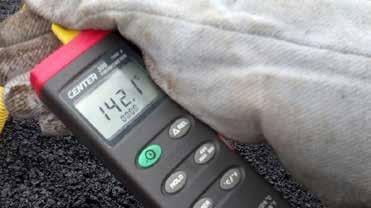
Table 1: Guideline for reducing mixing temperatures for different mixes and binder types
Table 1: Guideline for reducing mixing temperatures for different mixes and binder types
Figure 1: Compaction of asphalt manufactured at different temperatures
Asphalt
rubber from old tyres improves asphalt performance.
Rubber derived from end-of-life tyres can be used to improve the performance of asphalt. Rather than dispose of old tyres in landfill, the rubber can be recovered to modify bitumen for producing new asphalt.

The rubber from old tyres contains polymers and carbon black which improves the performance properties of the bitumen. The rubber is ground into particles called crumbs which can either be preblended with bitumen or added directly into the pugmill when mixing the binder with the heated aggregates.
The practice of recycling crumb rubber from old tyres into asphalt is a well proven technology and offers the following benefits to society and road asset owners:
• Helps keep old tyres out of landfills and reduces the risk of landfill fires and spread of mosquito borne diseases
• Reduces the need to use imported polymers to improve the performance of asphalt
• Reduces the amount of virgin bitumen used in asphalt with up to 20% crumb rubber.
The polymers in the rubber will increase the:
• Elastic properties of the bitumen which makes the asphalt more flexible and resistant to reflective cracking
• Viscosity of the binder which makes the asphalt more rut resistant under heavy traffic at high road surface temperatures
The carbon black in the rubber acts as an antioxidant making the binder more durable which provides a longer lasting asphalt surface with lower life cycle maintenance costs.
Paving low temperature Gap Graded Asphalt with crumb rubber
WHAT ASPHALT MIXES CAN BE MODIFIED WITH CRUMB RUBBER?
Dense graded (DGA), gap graded (GGA), and open graded (OGA) asphalt mixes are most suitable for modifying with crumb rubber. The % of crumb rubber used and the binder content of the asphalt will vary depending on the mix type.
MAKING ASPHALT MORE SUSTAINABLE
We use warm mix technologies to reduce the generation of fumes and odours when mixing and paving asphalt modified with crumb rubber. RAP and other secondary waste materials like recycled crushed glass, steel slag, and fly ash can also be used to reduce the demand for virgin materials to produce crumb rubber modified dense graded asphalt without compromising the overall performance of the asphalt. Old asphalt containing crumb rubber can also be reused to produce new asphalt. By using crumb rubber to increase the performance and durability of asphalt, we reduce the demand for non-renewable materials like bitumen, polymers, and aggregates during the life cycle of the pavement.
At COLAS Australia Group, we use rubber from the equivalent of over 1 million passenger car tyres per year to produce crumb rubber modified binders for asphalting and spray sealing Australia’s road network.
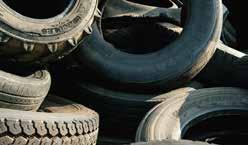
1.
Dense Graded Asphalt
The bitumen in DGA can be substituted with preblended crumb rubber bitumen (CRB). The % of crumb rubber used is typically between 13 – 15% by mass of bitumen. The binder content of the mix needs to be increased slightly to accommodate for the increase in mix stiffness and to achieve good field compaction. The substitution of C320 with CRB will improve the moisture susceptibility, rut resistance, and flexibility of the asphalt. The results from the Mitcham Council demonstration trials (Table 2) showed that the laboratory performance properties of the AC14 were significantly enhanced when substituting the C320 bitumen with CRB in the mix.
The use of crumb rubber modified DGA will provide a wearing or base course which will be less prone to cracking and rutting, more durable, and require less maintenance during its service life.
2. Gap Graded Asphalt
By using a gap graded asphalt (GGA), more binder can be incorporated into the stone skeletal structure of the mix. With the higher binder contents (> 7.5%) and higher % of rubber in the bitumen (>18%), GGA offers substantially more enhanced performance properties over DGA mixes. (Table 3).
GGA/CR are most suitable for placing over cracked pavements to stop reflective cracking. Experiences in California shows that the use of GGA/ CR can lead to a reduction in the asphalt layer thicknesses of up to 50% compared with conventional asphalt mixes.
3. Open Graded Asphalt
The use of highly modified crumb rubber bitumen in OGA mixes can lead to much higher binder film thicknesses compared with polymer modified binder due to the increased viscosity of the binder. This will result in quieter, more durable, and much longer lasting OGA wearing courses.
Table 1: Comparison of rubber consumption by mix type
Table 2: Performance properties of AC14 modified with CRB versus C320
Table 3: Typical performance properties of crumb rubber modified DGA vs GGA
high performance sustainable asphalt.
ECO Asphalt has been specifically developed by using quality controlled selected repurposed waste materials with a proven track record of performance to provide an asphalt which will last longer and outperform conventional dense graded asphalt.
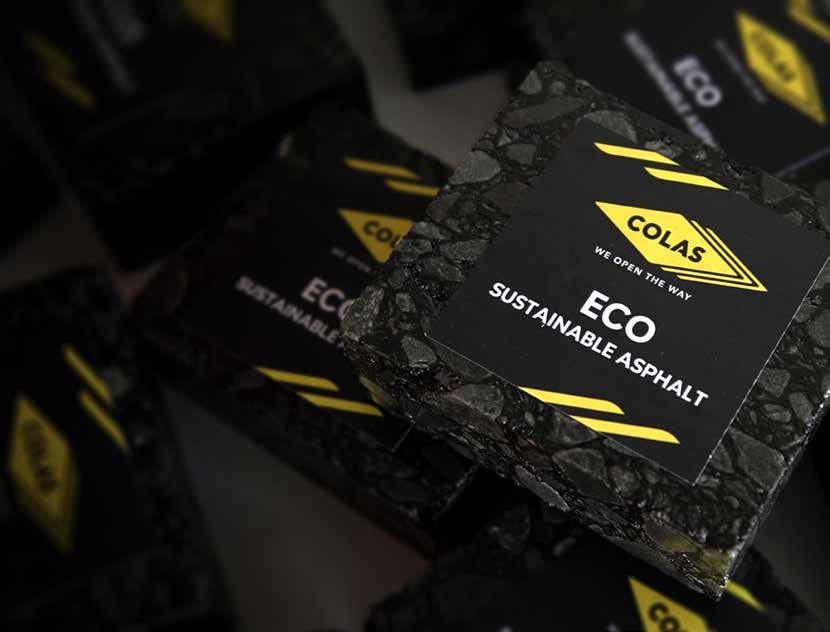
ECO Asphalt
ECO Asphalt is a cost-effective and lower carbon alternative to most conventional dense graded asphalt products only safer, longer lasting and more sustainable. ECO Asphalt can be used as wearing course or structural asphalt to replace the equivalent dense graded asphalt mix. It is suitable for use on residential streets, arterial roads, parking areas and in industrial areas.
BENEFITS OF USING ECO ASPHALT?
It is more sustainable than conventional asphalt because of its:
• Improved performance resulting in a longer service life with less maintenance and less disruption to traffic
• Reduced demand for non-renewable raw materials like aggregates, sand, hydrated lime, bitumen and polymers by replacing them with purposed waste materials
• Produced at lower temperatures which reduces the quantity of burner fuel required to heat the aggregates and also reduces the generation of greenhouse gasses and fumes
ECO ASPHALT CAN BE PRODUCED TO INCORPORATE:
• Recycled glass bottles
• Recycled rubber from end of life truck tyres
• Recycled old asphalt
• Uses liquid adhesion agent to reduce the carbon foot print compared with using hydrated lime
• Uses bio genetic binder to reduce the carbon footprint’
The quantity of the recycled content will depend on the mix type, availability of repurposed waste and application as shown in Table 2.
To put this into perspective a one kilometer lane surfaced with 50mm layer of AC14 ECO Asphalt mix will:
• recycle approximately 559 old equivalent passenger tyres and 56,966 empty stubbies
• preserve 8 tonnes of virgin bitumen and 94 tonnes of mineral aggregates
REPURPOSED RAW MATERIALS THAT CAN BE REUSED IN ECO ASPHALT:
1. Recycled Asphalt Pavement (RAP)
Asphalt is 100% reusable which means that at the end of its service life it can be reused to produce new asphalt. Therefore, RAP should not be disposed of but reused in the production of new asphalt to reduce the demand for virgin bitumen and crushed aggregates.
2. Recycled Crushed Glass (RCG)
The concept of using crushed glass as an aggregate isn’t new and can be traced back to the early 1960’s. RCG can be used as a replacement for fine crushed aggregates as long as it has been crushed to a consistent grading specification. Other benefits include lower absorption and lower specific gravity, meaning higher binder film thicknesses.
3. Warm Mix Asphalts (WMA)
Warm mix asphalt is essentially the same as hot mixed asphalt except that it has been produced at a lower temperature without compromising its ability to be paved and compacted. WMA helps satisfy the community’s need to reduce greenhouse gas emissions and energy consumption during the manufacture and paving of asphalt. Producing asphalt at lower temperatures also results in less oxidization of the binder which in turn will ensure a longer service life for the asphalt.
4. Crumbed Rubber (CR)
Rubber derived from end-of-life tyres can be used to improve the performance of asphalt. Rather than dispose of old tyres in landfill, the rubber can be recovered to modify bitumen for producing new asphalt. The rubber contains polymers and carbon black which improves the performance properties of the bitumen. The rubber is ground into particles which can either be preblended with bitumen or added directly into the pugmill when mixing the binder with the heated aggregates. The practice of recycling crumb rubber from old tyres into asphalt is a well proven technology and offers extensive benefits to society and road asset owners.
5. Liquid Adhesion Agent (LAA)
The use of a special liquid adhesion agent will help improve the moisture sensitivity of the mix and improve the low temperature compaction of the mix. The replacement of hydrated lime with LAA reduces the carbon footprint of the asphalt up to 18%.
6. Bio genetic binder
The part substitution of the bitumen with a bio genetic feedstock will help reduce the binder carbon footprint by 40% without compromising its performance properties.

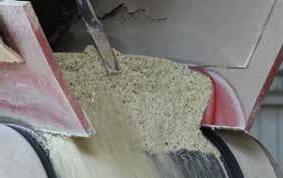
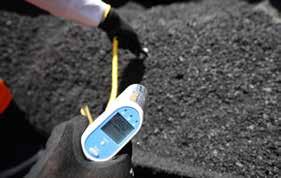
Table 1: Typical recycled content by mix type and application
Table 2: Comparison of ECO5 performance against heavy duty dense graded asphalt

future proof your pavements.
EME2 is a structural asphalt designed using performancebased laboratory tests to achieve high strength and flexibility, limiting rutting and cracking under heavy traffic. EME2 Asphalt is anufactured from locally produced hard bitumen and aggregates using conventional manufacturing and laying equipment.
Originally developed by COLAS, EME2 Asphalt has been used in France since the 1980’s and more recently in Australia since 2014. Local specifications have been developed to ensure that the same mix performance is achieve as the European based specifications. The use of EME2 asphalt in heavy duty asphalt pavements offers many benefits to road users and road asset owners.
Image: Paving EME2 asphalt on the M1 between Brisbane and the Gold Coast
Diagram 1: Comparison between the typical pavement design for dense graded and EME2 asphalt base courses
REDUCTION IN CONSTRUCTION COSTS
• Reducing the asphalt thickness up to 25% compared with conventional dense graded asphalt for the equivalent traffic loading and pavement life
• Can be paved in thicker layers of between 70 to 130mm which can lead to a reduction in the number of paver runs required
• Eliminating the need to place a waterproof seal under the wearing course because of its high impermeability to moisture ingress
• Less excavation required to construct a new pavement because of reduced pavement thickness required for the equivalent strength
• Can be used to strengthen an existing pavement without having to raise existing structures or kerb and channels
REDUCTION IN THE CARBON FOOTPRINT
• Providing a longer lasting pavement structure with lower life cycle maintenance costs over dense graded asphalt with the same thickness
• Reducing the demand for bitumen and aggregates required compared with using dense graded asphalt for the same project
• Increasing the propensity to carry heavier axle loadings thus reducing greenhouse gas emissions per tonne/km of freight
• Rendering the pavement less susceptible to damage caused by increases in temperature brought about by extreme climatic events
• The incorporation of RAP and elimination of hydrate lime helps reduce the carbon footprint of the mix
PERFORMANCE BASED MIX DESIGN
EME2 is designed to meet performance-based laboratory testing requirements which are shown in Table 1. There are no limits specified for the aggregate grading curve or binder content. The latter will depend on the outcome of the mix design process and will vary depending on the aggregate and bitumen sources used. The binder content and gradings of the production mix is monitored against the mix design outputs and allowable tolerances. Due to the extensive testing regime, a new mix design can take up to 3 months to complete.
WHAT MAKES EME2 DIFFERENT FROM DENSE GRADED AC20?
EME2 is produced at a higher temperature using a maximum aggregate size of 14mm, with no natural sand and a higher bitumen content between 5.6 – 5.9% which makes it:
• more workable and easier too compact
• less sensitive to moisture damage so does not require hydrated lime
• more impermeable to moisture ingress due to lower insitu air voids
• more flexible, than dense graded AC20
A special 10/20 or 15/25 hard penetration bitumen is used to ensure that the modulus and wheel tracking requirements in Table 1 are achieved.
EME2 has a smoother surface texture than AC20 so care must be taken to prevent skidding in wet weather if opening the surface to vehicular traffic before overlaying it with a wearing course. In the latter case gritting or restricting the speed limit is recommended.
MAKING YOUR ASPHALT PAVEMENTS MORE SUSTAINABLE
Not only will the use of EME2 reduce the construction costs of building new or rehabilitating old pavements, it will also reduce the carbon footprint by providing a stronger pavement using less materials during its life cycle. Up to 15% RAP can also be used which will help further reduce the demand for nonrenewable raw materials like bitumen and aggregates. Warm mix technologies can be used to reduce the asphalt mixing temperature, reducing the consumption of energy and generation of greenhouse gasses.
Table 1: EME2 performance-based mix design requirements
Surface your gravel roads with Graded Seals.

Otta seals were developed in Norway in the 1960’s to surface gravel roads using a coarse graded alluvial gravel and a soft binder. Otta seals rely on the soft binder migrating through the graded aggregate after being spread over the freshly sprayed bitumen. This action is achieved during rolling of the mat with pneumatic tyred rollers and in-service by the vehicular traffic.
COLAS and has been surfacing gravel roads with graded seals in Southern Africa and Canada since the 1990’s and more recently in Australia since 2018. COLAS has further enhanced the performance and durability of Otta seals and made them more robust by:
• Modifying the cutback binder with crumb rubber from old tyres to make the seal more durable,
• Precoating the graded aggregates to improve the stone retention in the early life of the seal,
• Restricting the % of fines in the graded aggregate to reduce stone loss,
With tighter restrictions being placed on using gravel from borrow pits, we use blended aggregates from commercial sources with quality control processes in place,
In a new development, COLAS uses high float emulsion to replace cutback binder to construct graded seals without using cutters.
Surfacing 20km of your road network will preserve one olympic size of scarce gravel each year from traffic and water erosion.
seal one month
Surfacing your low trafficked gravel roads with COLAS Graded Seal will provide the following benefits to society and road asset owners:
Provides positive outcomes for the environment by:
• Eliminating the generation of dust from traffic
• Preserving scarce gravel resources by cessation of gravel loss from traffic and erosion
Improves the outcomes for road users by:
• Providing all weather access
• Reducing vehicle operating costs
• Reducing traveling times
• Improving road safety
Reduction in gravel road maintenance costs by eliminating the need for ongoing grading and regravelling.
Requires less base preparation than conventional sprayed seals:
• Can tolerate uneven base course surfaces
• No priming of the base is required
• Can be constructed at low ambient temperatures down to 10°C
• More forgiving to base defects due to self-healing binder
Use of graded aggregate allows high binder application rates:
• Without risk of bleeding
• Is more durable and longer lasting than a single seal
Graded
after construction on rural roads
WHY SURFACE LOW TRAFFICKED GRAVEL ROADS WITH COLAS GRADED SEAL
Gravel roads require ongoing grading and regravelling to keep them in a good condition. This places a burden on existing gravel, human, and equipment resources. By surfacing your existing gravel roads, you will eliminate this ongoing maintenance need and after 5 years you should recover the cost of the new surfacing as shown in Graph 1.
COLAS Graded Seals are most cost-effective for surfacing a gravel road when:
• the traffic volume exceeds 50 AADT
• it requires frequent maintenance
• the adjoining farming areas are sensitive to dust like vineyards, orchards, crops, livestock etc
• high vehicle operating costs due to the poor ride conditions.
COLAS Graded Seals are more cost effective than traditional primer seals or single sized seals for surfacing gravel roads:
• more durable because the graded aggregate forms a strong interlock and the crumb rubber modification of the binder makes the seal more robust,
• provides a longer service life before it needs to be resealed.
COLAS Graded Seals can also be used to surface haul roads, forestry roads, utility service roads and temporary deviations.
Diagram 1: Comparison of a single seal and a graded seal
COLAS GRADED SEAL IS EASY TO CONSTRUCT
COLAS Graded Seal requires minimum base preparation. However, the performance of the graded seal depends on the quality of the base. Once the base has been shaped and compacted, the semi-priming crumb rubber modified binder or high float emulsion is sprayed. If the gravel surface is dry, then it will need to be dampened with a water truck to avoid pin holing.
The graded aggregates are spread over the freshly sprayed cutback binder or high float emulsion and rolled with pneumatic tyred rollers. Stop rolling once the binder has migrated to the surface. Any loose aggregates must be swept back onto the fresh binder. Do not sweep the surface after rolling.
Graded seals will be sensitive to vehicle braking and turning actions in their early life while the binder is still curing. The soft binder is self-healing and repairs are easy to carry out on damaged areas.
MAKE YOUR GRAVEL ROAD NETWORK MORE SUSTAINABLE
Surfacing your gravel roads with COLAS Graded Seals will not only reduce your maintenance costs but will preserve your scarce gravel sources, reduce the generation of dust pollution and prevent the erosion of large quantities of gravel into the ocean.
At COLAS we are all about delivering safer and more sustainable solutions for constructing and maintaining your road network. Contact your local COLAS office to find out how to deliver Otta seals in the most cost-effective way to suit your budget and resources.
Graph 1: Typical accumulative costs of maintaining 1km of gravel road over 10 years
Table 1: Typical lifecycle of COLAS Graded Seals compared to conventional seals
emuslsion spray seals for safer applications.
Spray sealing is a fast and economical way to seal a pavement. Spray sealing is carried out by spraying a thin film of bituminous binder onto a pavement and then covering it with a layer of aggregate.
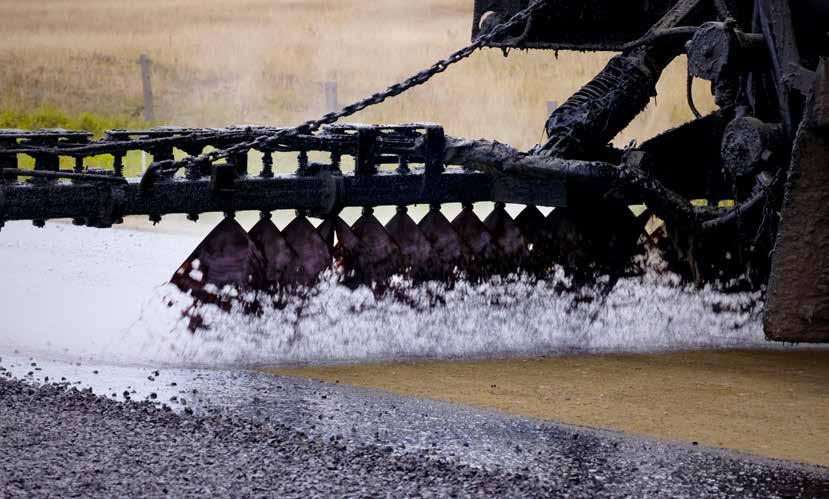
The bituminous binder bonds the cover aggregates to the substrate to provide a waterproofing layer with high skid resistance for the road user.
Traditional spray sealing consists of using a hot binder which is often cutback with kerosene and is stored and applied at temperatures of the order 180 to 190°C.
ADVANTAGES OF BITUMEN EMULSION OVER HOT CUT BACK BINDERS?
Emulsions are safer to use
• Do not require to be heated during storage or transport
• Require less heating to spray
• Reduced hazards from explosions, fires and serious burns
• Eliminates the need to handle kerosene and adhesion agents on-site
Are more environmentally friendly
• Generate up to 34% less emissions and greenhouse gasses
• No ground contamination at stack sites because no pre-coating of aggregate required
Are less weather dependant
• Can be applied at lower ambient temperatures
• Reduced risk of ‘bleeding’ during hot weather from entrapment of cutters
Improved in-service performance
• Less polymer and binder degradation during storage due to less heating.
The problems with traditional spray sealing:
• Generates significant amounts of greenhouse gases due to the energy required to heat the binder
• Requires the use of volatile ‘cutters’ to promote adhesion to the aggregates, particularly in cool ambient conditions
• Risk of serious burns and/or explosions with the handling of hot binders and kerosene
• Risk of the stone stripping if sprayed without adding cutter at surface temepratures below 21°C for bitumen and 28°C for PMBs
• Risk of workers exposure to chemical burns from handling adhesion agents on-site and inhaling fumes from adhesion agents when added into hot binders
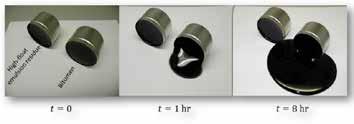
Showing the resistance of high float emulsion residue to flow against C170 bitumen

WHY CHANGE TO BITUMEN EMULSION?
Emulsions are inherently safer to use for spray sealing applications than using hot binders that are cutback with kerosene and they also generate less greenhouse gas emissions.
There are also numerous technical advantages associated with the use of bitumen emulsion. These include;
Improved wetting of the cover aggregates due to the reduced binder viscosity at ambient temperatures
Improved adhesion due to the physio chemical attraction between the ions in the emulsion binder and the free electrons on the aggregate surfaces
ADVANCES IN BITUMEN EMULSION TECHNOLOGY
A number of advances in bitumen emulsion technology have occurred which make emulsions more viable to use compared to standard emulsions, namely:
The emulsification of polymer modified binders means higher binder content emulsions with enhanced binder properties can be produced thereby:
• reducing the amount of water that needs to be transported
• providing improved seal performance
The use of thixotrophic High Float emulsions means higher application rates can be sprayed without the risk of emulsion “runoff” on steeper gradients
Picture: Fumes being released into the atmosphere during spraying of hot cutback bitumen
HIGH RESIDUE POLYMER BITUMEN EMULSIONS
SAMIflex E HR range of emulsions are produced from polymer modified bitumen with up to 6% polymer and a solids content between 75% to 78%.
APPLICATION OF EMULSIONS FOR SPRAY SEALING
Emulsions can be applied when the road surface temperatures are > 10°C and rising. This makes emulsions ideal for using when sealing new pavements in winter or resealing low trafficked roads in cooler weather.
The determination of the application rate must be based on the residual binder content of the emulsion. The same residual binder applications rates must be used as for the equivalent hot binder grade.
Emulsions must not the sprayed on surfaces with gradients >5% to avoid run off. If run off is a risk, then consider using SAMIflex HR or High Float emulsions.
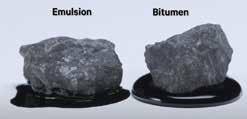
Figure 1: Comparison of Green House Gas emissions
Crumb rubber modified binders (CRMB)
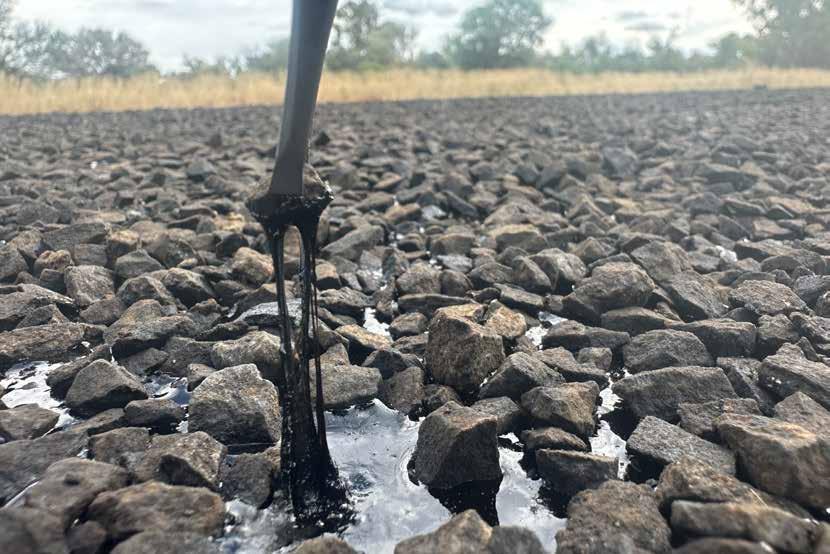
retread your roads with crumb rubber modified spray seals for longer life.
Rubber derived from end-of-life tyres can be used to improve the performance of your sprayed seals. Rather than dispose of old tyres in landfill, reuse the rubber that contains polymers to modify bitumen for constructing a new spray seal.
Crumb rubber modified binders (CRMB) have been used in spray sealing since the 1970’s in VIC and NSW but in recent years its use has become more widespread. It offers the following benefits to society and road asset owners:
• Helps keep old tyres out of landfills and reduces the risk of landfill fires and mosquito borne diseases
• Recycling crumb rubber from old tyres reduces the demand for importing new polymers
• Up to 18% crumb rubber can be used to modify bitumen which reduces the demand for new bitumen to be used in spray sealing
• The carbon black in the rubber acts as an antioxidant making the binder more durable providing a longer lasting seal with lower life cycle maintenance costs
• Allows the new seal to be opened to traffic after rolling and sweeping thereby minimising stone loss and traffic disruptions.
The polymers in the rubber will increase:
• the elastic properties in the bitumen making the seal more flexible and less prone to cracking in cold weather
• the viscosity of the bitumen making it less prone to bleeding in hot weather under traffic
CRUMB RUBBER PARTICLES
The rubber is normally extracted from old truck tyres and mechanically ground into small particles so that it can be blended with hot bitumen. Size 30 mesh crumb rubber particles must meet the grading envelope shown in Table 1. The metal and fibres from the tyres must be removed.
Table 1: Typical grading envelope for size 30 mesh crumb rubber particles
CRUMB RUBBER BITUMEN BLENDING
The blending can be done in a factory or in the field near the construction site. The latter largely depends on the distance of the work site from the blending location. The base bitumen must be super-heated before the crumb rubber particles are added so that the rubber can react with the aromatic components in the bitumen. Once the crumb rubber particles have been added, the binder must be allowed to react for up to 1 hour. Once the crumb rubber particles have partly digested in the bitumen, the binder is ready to be sprayed. The crumb rubber particles will continue to digest if maintained at high temperatures. This will result in the softening point, torsional recovery and viscosity properties changing over time.

HANDLING OF CRUMB RUBBER MODIFIED BINDERS
Unlike polymer modified binders, the partly digested crumb rubber particles remain in suspension in the hot binder. Therefore it is necessary to keep the CRMB agitated to prevent the undigested rubber particles from falling out of suspension during storage and handling. This is best done by circulating or stirring the CRMB during storage and transport.
5-10% S5R & S9R High Stress Seals (HSS)
13-15% S15R Extreme Stress Seals (XSS) and Stress Absorbing Membranes (SAM) on pavements with low crack activity
18% S18R Stress Absorbing Membrane Interlayers (SAMI) under asphalt layers on pavements with high crack activity
*When spraying crumb rubber modified binders the application rate can be increase over and above C170 bitumen by these factors
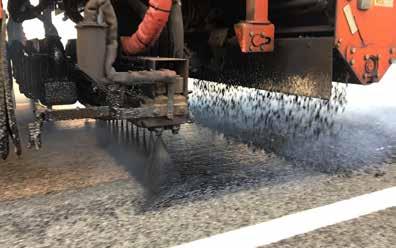
SELECTION AND USE OF CRUMB RUBBER MODIFIED BINDERS
CRMB’s are ideal to use for constructing single sized 10 and 14mm reseals because the binder application rate can be increased to improve the stone retention without increasing the risk of bleeding or flushing under heavy traffic in hot weather. This will also render sprayed seals which are less prone to oxidisation and cracking thus providing more durable and longer lasting seals. Various percentages of crumb rubber can be added to C170 bitumen for spray sealing applications which are shown in Table 2.
CONSTRUCTION OF CRUMB RUBBER MODIFIED SPRAY SEALS
Due to the higher viscosity of CRMB’s, they need to be heated up to 200⁰C to be able to spray them without adding cutters. The pavement temperature should be a minimum of 25⁰C and rising before spraying the hot CRMB without using cutters. Conventional sprayers can be used with AN18 or larger nozzles to achieve a uniform binder spray pattern across the pavement. The aggregate must be precoated which helps with the adhesion and rolled immediately after placing. Once the rolling is completed the new seal can be broomed and opened to traffic.
NEW DEVELOPMENTS
CRUMB RUBBER MODIFIED BINDER
SAMI have developed new technologies which have allowed Colas and VSA to successfully transport and spray over millions of litres of CRBM across Australia:
• a low viscosity S15R which can be sprayed without having to add cutters to prevent the binder from tram lining
• long haul S15R which can be transported long distances with minimal crumb rubber separation occurring in the road tankers
Table 2: Selection and use of different grades of CRMB’s
Mobile CRBM blending plant in operation in the Pilbara region
an economical pavement maintenance tool for asphalt and concrete.
Overband Crack Sealing is one of the most economical pavement maintenance tools for asphalt and concrete pavements.
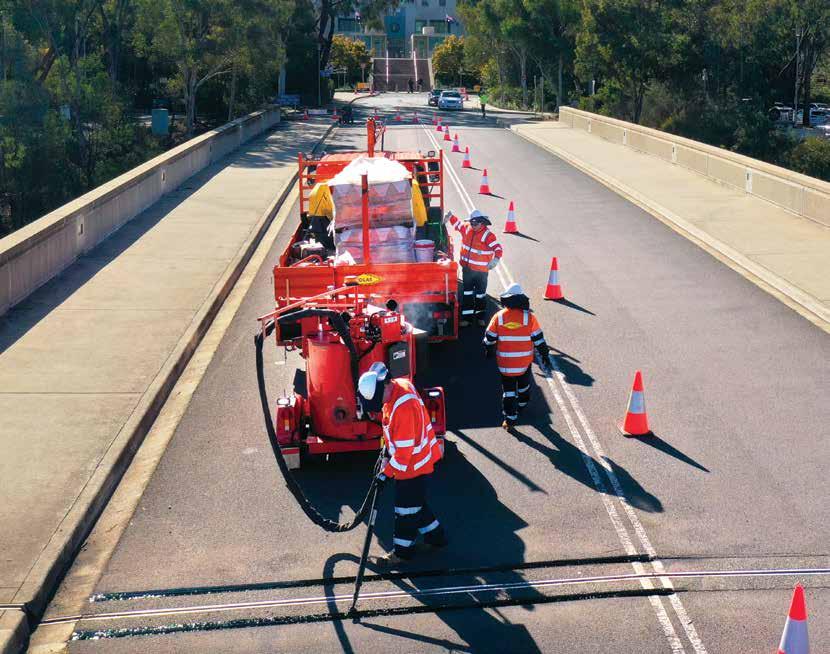
SAMIfilla HM uses elastomeric polymers which produce a strong yet flexible seal that bonds well to the walls of the crack.
This process is the key to keeping water out of the pavement sub-base which in turn will help to extend the service life period of the pavement.
Features:
• Excellent ductility in cold temperatures
• Superior tensile strength supports heavy traffic loading
• Applied under pressure to fill and seal cracks
• Excellent seal integrity yielding longer service life
Benefits:
• Delays and minimizes reflective cracking
• Low stiffness, highly elastic and good memory
• Extends overall pavement service life
• One of the most economical pavement repair process
• Consistent quality application with high production
Applications:
• Highways
• Streets and Roadways
• Race Tracks
• Airport Runways and Taxiways
• Car Parks
• Asphalt and Concrete Pavements
Common uses:
• Random cracking
• Transverse cracking
• Longitudinal cracking
• Reflective cracking
• Concrete construction joints
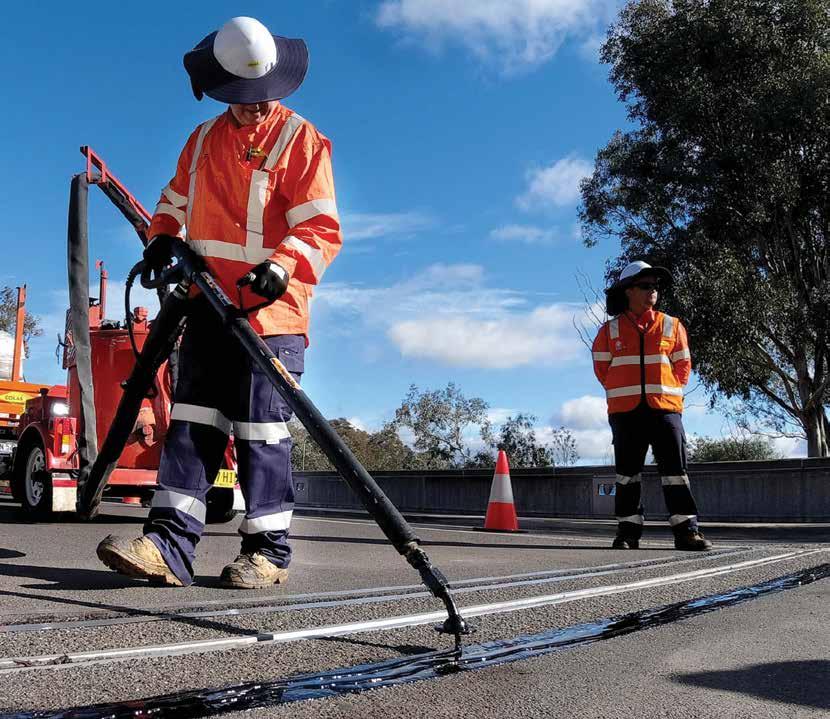
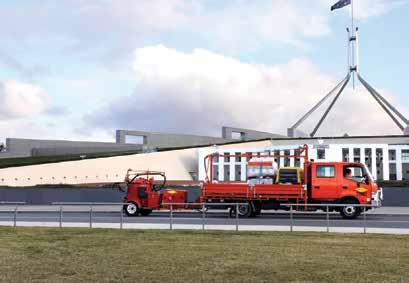
Crack sealing pavement maintenance at Parliament House
direct heat ‘rubberised’ crack and joint sealant.
Elastomeric compound. Polymer modified. 100% water tight seal. Traffic ready in 20 minutes. Multi-use for asphalt and concrete.

TECHNOLOGY BREAKTHROUGH
Now for the first time, Industry professionals can get contractor type results in 3 easy steps using 3 tools. CRACKSTIX are available in two standard sizes, small 6mm and medium 12mm. They are User Friendly & Ready-To-Use: no mixing, nothing to add, just uncoil, cut to length, pack and heat.
CRACKSTIX are flexible & can be stretched & shaped to custom fit the repair. The rubberized compound melts/ liquefies instantly & cures quickly. The self levelling sealant goes inside the crack.. not over the crack.. less waste, no tracking or unsightly residue. The multi-use formula can be used on asphalt & concrete pavements and is available in black and grey.
WHY HOT, DIRECT HEAT PROCESS?
In the past, most contractors have had no choice but to use cold pour or caulking type fillers. Cold applied products fill from the bottom up and do not permanently bond/seal to the crack sidewalls.
CRACKSTIX are hot applied, using a direct heat process CRACKSTIX form a permanent bond to the sidewalls of the crack or joint and provides a (liquid rubber) 100% water tight seal. This seal will remain flexible & intact through the winter and summer expansion/contraction cycles.
ASPHALT TO CONCRETE
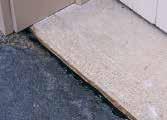
ASPHALT TO ASPHALT

CONCRETE TO CONCRETE

3 easy steps
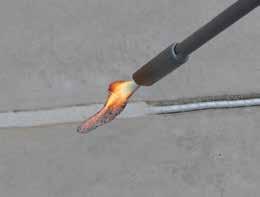
1. CLEAN IT
Take a screwdriver & scratch out all debris from inside the crack, then take a whisk broom & sweep it clean. Crack must be dry.
2. PACK IT
Uncoil & cut the appropriate size & shape/pack in to crack with fingertip pressure. Using the screwdriver, press the stix into crack approximately 1.5mm to 3mm below actual pavement surface level. To achieve a neat overall appearance, do not overfill crack. The material seals In It… Not On It.
3. MELT IT
take propane torch and light it. Adjust bright blue part of flame to 300mm long. Holding the flame 25mm – 40mm from stix, move the flame from side to side in a slow & even motion, heating no more than 300mm at a time (melt stick until liquid).
preserve your aged asphalt wth enrichment treatments.
Your pavement is under constant attack from the environment. You need the protection of a safe, environmentally friendly material that fights back with its own powerful, clean chemistry. The binder in low trafficked asphalt surfaces hardens through oxidation which can lead to premature cracking and the ingress of moisture into your pavement.
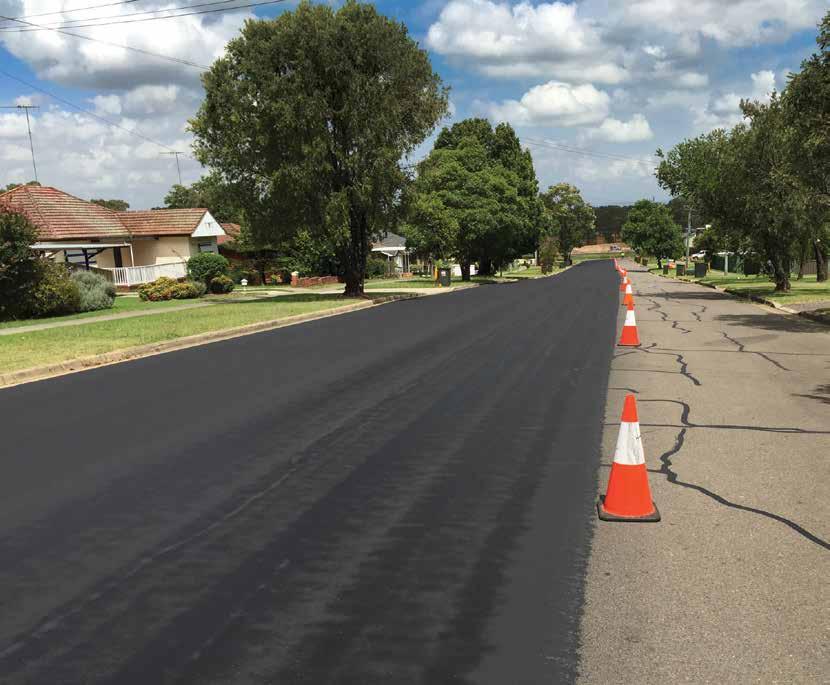
SRS SEALCOAT
SRS SealCoat is a micro-surfacing sealant designed to extend the life of existing bituminous surfaces. The binder, in the asphalt, and spray seal are exposed to the harmful UV rays of the sun and rain, which can lead to the rapid deterioration of the bituminous surfacing.
By spraying SRS SealCoat onto aged bituminous surfaces you can:
• Seal micro cracks and prevent the ingress of moisture into the underlying pavement
• Enrich the surface to improve adhesion of the existing aggregates and reduce the loss thereof
Thus retarding the ageing process and extending the service life before more expensive treatments are required.
MATERIAL
SealCoating involves the application of a polymer modified bitumen emulsion containing specially graded aggregates, fillers, latex, rubber and pigment adjusters, with sand and water being post-added on-site prior to application. During the application process, the macro texture of the initial pavement is filled with the emulsion and fine sand to the point of oversaturation, covering the exposed aggregates in the process. During the curing phase, separation occurs between the filled emulsion and water resulting in a gradual reduction in layer thickness. After the water has vaporised, the residual SealCoat layer remains almost level with the top of the aggregate after curing has ended.



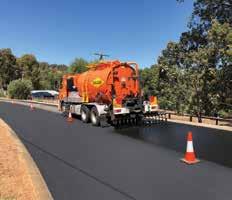
APPLICATION PROCESS
Custom built sprayers with larger nozzles than conventional bitumen sprayers, specialist pumps, and mixing paddles help to keep the material in suspension. Being an emulsion, it is not heated but applied at ambient temperature. Two key advantages of emulsion over conventional treatments are the speed of application with an average shift spraying over 6,000m2 in urban streets and a fast drying time of between 30 mins and 2 hours. SealCoat will fill the surface voids but will not provide any shape correction. It can be applied a number of times to a structurally sound pavement at 5-yearly intervals.
RESULTS/TESTING
Current testing includes permeability and skid resistance with results showing the permeability level reduces and an increase in skid resistance values across all treated pavements.
CONCLUSION
The surfaces of flexible asphalt pavements designed for a 20 year life commonly have a functional life of between 12-15 years between major maintenance treatments; however, a mid-life surface treatment of SealCoat will help to impede the aging process and potentially delay the need for major maintenance treatments. After an application of SealCoat, the pavements skid resistance is improved and permeability decreased.
fuel resistant coating for protecting asphalt surfaces.
FRM SealCoat is an emulsion based sealant which contains no harmful chemicals so that it can be applied safely to existing surfaces.

FRM SealCoat is designed to penetrate asphalt surfaces and protect them from damage caused by fuel spillages which can occur on airport aprons and vehicle depots. It may be applied as a mineral filled sealer through spray, broom, or squeegee and may be applied as an un-filled coating through high volume equipment.
Within as little as a few minutes after installation, a tough but ductile, black satin surface permanently protects the underlying asphalt surface from tyre wear, sun degradation, and moisture. The high molecular weight and high softening point of this material prevent tracking or displacements by rolling traffic in the heat of the day.
FRM SealCoat is filled with an engineered hydrocarbon additive, which is provided as an emulsified, high molecular weight thermoplastic. It exhibits a high softening point, good low temperature ductility and excellent hydrolytic stability; as well as superior adhesion to moist mineral surfaces.

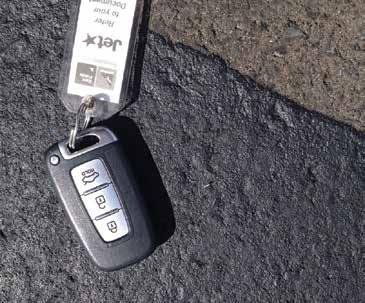

ADVANTAGES
• Jet fuel (Jet A thru JP-8) and Motor Vehicle Oil/lube resistant.
• Unique reactive chemicals attack natural metal oxides present in the exposed aggregate surface.
• Chemical resistance, rate of cure, final surface hardness, and skid characteristics can be modified to meet local specifications.
• May cure in less than (20) minutes, in optimal conditions, to a track-free surface.
• Safe to handle and store.
• Near zero VOC; and odourless.
• High temperature, tyre scuff resistant to power steering abuse
• Easy clean up with water.
• Cured container residue safe for municipal landfill
Sealcoat on shoulders of taxiway at Sydney Airport
increase traffic flows and safety with flowell.
An active road marking system: Flowell, is a dynamic, scalable and modular signalling solution that aims to optimise urban space, traffic flows, safety and the coexistence of multiple forms of transport.

The Flowell solution consists of panels bonded to the pavement that can bear all types of vehicle traffic with the same grip as conventional road surfacing. The panels, composed of LEDs encapsulated in a multilayer substrate, are connected to an electrical grid and controlled remotely.
Flowell streamlines traffic on existing roadways. It is a multifaceted transport management and signalling system that manages all aspects of travel demand, providing optimised solutions for peak time traffic, variable parking management and safety solutions.
• Dynamic and scalable
• Streamlines traffic on existing roadways by giving priority to groups of users
• Manages shared spaces in roads and cities
• Enhances safety of pedestrians
Optimise traffic demand management and safety by:
• Increasing visibility and safety of pedestrian crossings
• Dynamic lane allocation
• Converting carparks into loading zones during the daytime
• Creation of temporary drop-off zones around schools
• Guiding traffic at intersections
Where FLOWELL has been implemented benefits include:
• Less forced passages
• Less jaywalking
• Less late stops
• Improved understandings of right of way and who has priority at a junction
• Less conflict between road users
– cyclists/traffic
• Improved traffic safety
• Better traffic flows
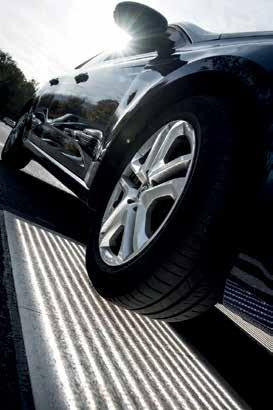
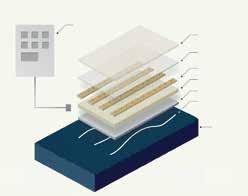
SMART CROSSWALKS AND CYCLE LANES
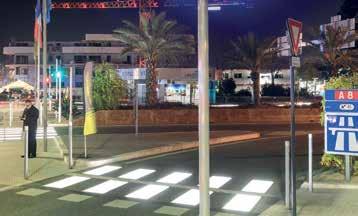
LANE AND EXIT DELINEATION

INTERSECTION MANAGEMENT

SAFE STOPPING, ACCIDENT PREVENTION

BUS LANES

GUIDED LANES: NIGHT-TIME JOURNEYS

DYNAMIC

